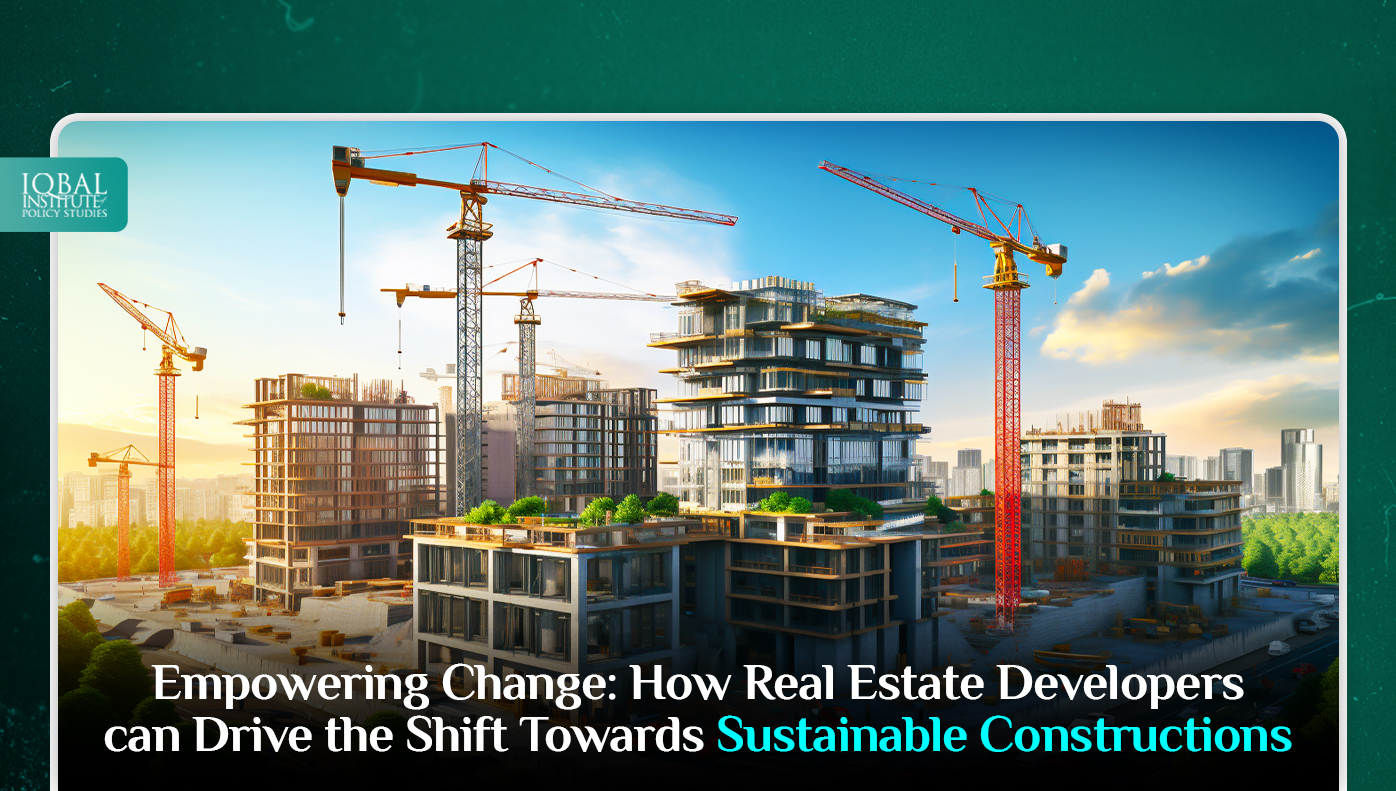The real estate industry plays a significant role in shaping our urban landscape. However, the traditional practices of construction and development have long been associated with negative environmental impacts, resource depletion, and excessive waste generation. As we face mounting global challenges such as climate change and resource scarcity, the need for sustainable constructions has become more pressing than ever before. In this blog, we will explore how real estate developers can drive the shift towards sustainable constructions, making a positive impact on both the environment and society.
Understanding Sustainable Constructions
Sustainable constructions refer to the integration of eco-friendly practices, innovative technologies, and design principles that aim to reduce the environmental impact of buildings throughout their lifecycle. The key pillars of sustainable constructions include energy efficiency, water conservation, waste reduction, use of renewable resources, and the incorporation of green spaces. By adopting sustainable construction practices, developers can create buildings that not only consume fewer resources but also contribute to the overall well-being of the occupants and the surrounding communities.
The Environmental Imperative
The real estate sector is a major contributor to environmental degradation, accounting for a significant portion of global greenhouse gas emissions, energy consumption, and water usage. The construction phase alone generates vast amounts of waste, much of which ends up in landfills. Sustainable constructions present an opportunity to minimize this impact and pave the way towards a greener future. Real estate developers have a crucial role to play in leading this transformation.
Rethinking Building Design and Materials
One of the fundamental steps towards sustainable constructions is reimagining building design and material choices. This entails opting for energy-efficient building designs, incorporating passive heating and cooling techniques, maximizing natural light and ventilation, and using low-impact construction materials. Materials such as recycled steel, reclaimed wood, and low-carbon concrete can significantly reduce the carbon footprint of a building.
In addition, real estate developers can prioritize the use of sustainable certifications like LEED (Leadership in Energy and Environmental Design) or BREEAM (Building Research Establishment Environmental Assessment Method) to ensure the sustainability standards of their projects.
Embracing Renewable Energy
The integration of renewable energy sources is paramount in driving sustainable constructions. Real estate developers can harness the power of solar panels, wind turbines, and other renewable technologies to generate clean energy for their buildings. By doing so, they not only reduce their reliance on fossil fuels but also contribute to the overall decarbonization of the energy sector.
Moreover, smart technologies like energy-efficient lighting, automated heating and cooling systems, and energy management software can optimize energy consumption within buildings, further enhancing their sustainability quotient.
Water Management and Conservation
Water scarcity is an increasingly concerning issue in many regions of the world. Sustainable constructions should prioritize efficient water management and conservation strategies. Real estate developers can incorporate rainwater harvesting systems, greywater recycling, and low-flow fixtures to minimize water wastage. Additionally, drought-resistant landscaping and green roofs can help conserve water while providing multiple environmental benefits.
Waste Reduction and Circular Economy
Construction activities generate vast amounts of waste, and much of it ends up in landfills. To promote sustainable constructions, developers should adopt a circular economy approach, where waste is minimized, and materials are reused or recycled whenever possible. Implementing efficient waste management plans and collaborating with recycling facilities can significantly reduce the environmental impact of construction projects.
Engaging with Local Communities
Sustainable constructions are not just about the physical aspects of a building; they also involve fostering a sense of community and social responsibility. Real estate developers can actively engage with local communities to understand their needs and aspirations. By involving the community in the planning and design process, developers can create buildings that cater to the specific requirements of the residents while also addressing broader societal concerns.
Prioritizing Green Spaces and Biodiversity
Incorporating green spaces and preserving biodiversity is vital for sustainable constructions. Real estate developers should prioritize the creation of parks, gardens, and green corridors within their projects. These spaces not only enhance the aesthetic appeal of the development but also provide valuable ecological benefits, such as improved air quality, habitat preservation, and temperature regulation.
Promoting Sustainable Transportation
Transportation is another significant contributor to greenhouse gas emissions. Real estate developers can encourage sustainable transportation options by providing bicycle racks, electric vehicle charging stations, and convenient access to public transportation. By doing so, they not only reduce the carbon footprint of their projects but also contribute to alleviating traffic congestion and improving air quality in the surrounding areas.
Conclusion
As the global community grapples with the challenges of climate change and resource depletion, the real estate industry must play a leading role in driving the shift towards sustainable constructions. Real estate developers have the power to effect positive change by reimagining building design, embracing renewable energy, managing water resources wisely, reducing waste, engaging with local communities, and prioritizing green spaces and biodiversity.
Empowering change in the real estate sector requires a concerted effort from all stakeholders, including developers, policymakers, investors, and consumers. By making sustainability a core principle in their projects, developers can not only contribute to a greener future but also reap economic benefits through reduced operating costs, increased property values, and enhanced reputation. It is time for the real estate industry to embrace sustainability as the new standard and drive the transition towards a more resilient and harmonious urban landscape for generations to come. Together, we can build a sustainable future where our cities are not just concrete jungles but thriving ecosystems that nurture life and well-being.
This article is written by Radma Nouman. Radma is a research analyst at the Iqbal Institute of Policy Studies (IIPS).



Leave a Reply